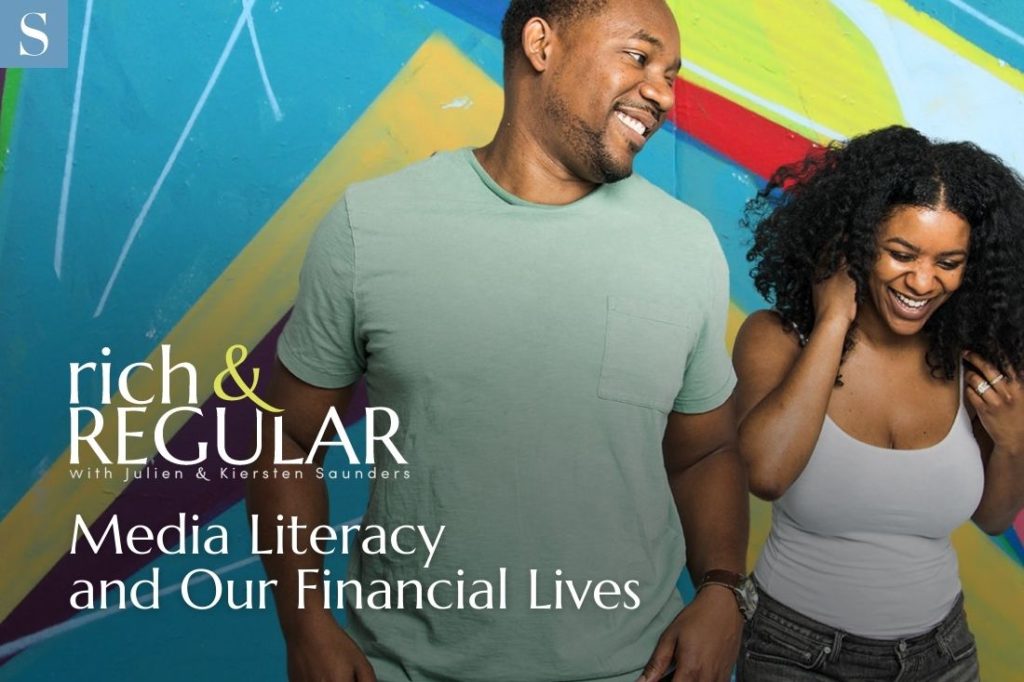Knowing what’s real online and in the media can be tricky, as the last few years have seen a rise in events and news stories that are hard to believe. Given that many Americans use social media as at least one of their news sources, as shown in a study done by Pew Research, and given the prevalence of inaccurate or false information on social media platforms, it’s usually beneficial to take anything you see with a grain of salt.
If you find yourself wondering if what you’re seeing online is accurate, developing your critical thinking skills might be helpful. Determining the likelihood of the truth behind a statement, and where to verify that information, can make your social media browsing a little less fraught and help you feel a little more confident about the information you’re receiving.
Rich & REGULAR with Kiersten and Julien Saunders is no longer releasing new episodes on the SUCCESS Podcast Network, but you can still listen to the full conversation below.

Hone your skills
Spotting false information online has become more complex, especially as people get their primary news information from social media and the internet. Using critical thinking isn’t a silver bullet for figuring out if something is real or fake, but it can be a tool that makes it easier to spot inaccuracy.
Remain skeptical
Skepticism, or questioning the truth of a statement, is essential in helping you establish if things are false. Although it can often be challenging to separate facts from misleading information, maintaining a healthy skepticism of the data can help you decide whether what you’re reading is trustworthy.
Use the following to help you keep a skeptical frame of mind:
Do you recognize the source? Major news agencies tend to adhere to stricter journalism standards than social media posts and are likely to have rigorous fact-checking procedures. While there’s always a chance the information isn’t accurate, major news sources are more likely to have been repeatedly fact checked before publishing.
Double-check the URL. Fake news sites will often mimic an actual website that might get people to click if they don’t look closely. Standard websites usually end in .com, .gov or .org, but fake sites will often add letters onto the end of the URL. If you see websites ending in .com.co or com.lo be highly skeptical of any information listed there.
Check the language used. One of the quickest ways to spot fake news is the style and terminology used in the message. The language is usually slightly off, with ‘a’s and ‘the’s in the wrong place or missing entirely, letters all capitalized or the repetition of ‘this is not a hoax.’ Additionally, there are typically abundant misspellings and multiple exclamation points used in false information.
Look for missing links. Fake news sites often either quote anonymous sources or don’t provide links to facts or assertions that they make. A lack of links, or links that redirect you to websites that have nothing to do with the topic, should be a red flag.
Confirm with large, established news outlets. The chances are that multiple outlets will cover real breaking news. ALthough you might disagree with the political leanings of the major news outlets, checking multiple major sites to see if they’re reporting the same story can be a good way to confirm if something is likely valid.
Additionally, use sites like Factcheck.org, Mediabiasfactcheck.com, ScienceFeedback.co or Politifact.com to verify claims made in articles, speeches or television.
Go deeper
As you develop your critical thinking skills, it’s vital to check your own mental biases to make sure you don’t just believe the news that affirms your personal leanings, and mark the rest as fake.
Question your assumption. You may have grown up with a political leaning or certain beliefs that leave you looking at the world through a specific lens, and never asking if alternative points of view might be genuine. Start to look at the things you hold as truth and do a thought experiment to see if you can find a valid reason why someone might have a different opinion other than your own.
Look for confirmation bias. Pay attention to how often you discount information because it doesn’t confirm your view of the world. Although being skeptical on the internet is important, seeing the nuances of a situation or your own bias against a particular person or group of people instead of their message might give you some more information to use when considering difficult or contrary information.
Stay vigilant
It’s essential to do your research, but remember that it’s usually worth digging deeper if something feels false to you. Some false information is easy to spot if you know what to look for, but it is likely to get more sophisticated as time goes on. Developing critical thinking skills and identifying your own biases can help you determine if what you’re seeing is likely to be true.










